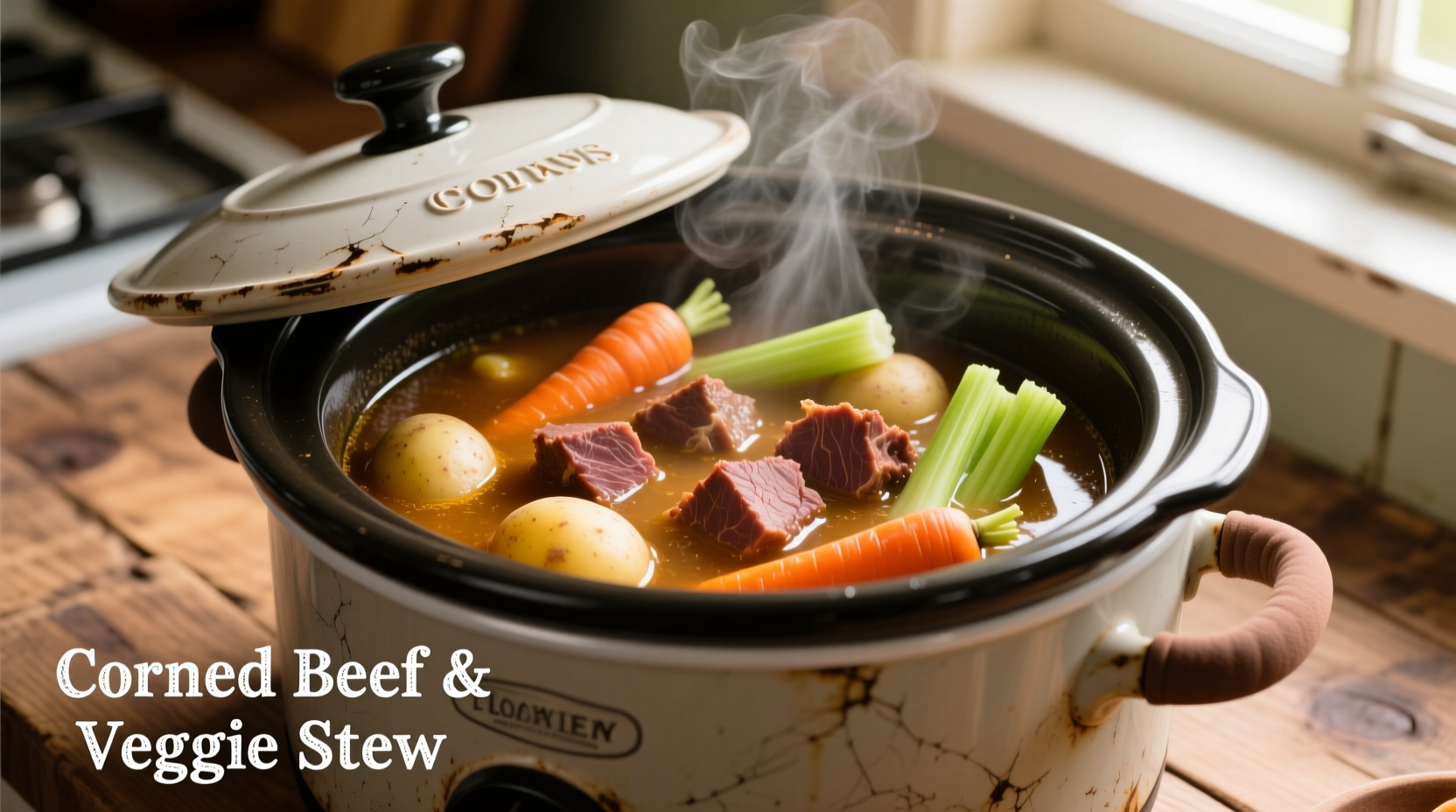The perfect slow cooker corned beef requires a 3-4 pound brisket, 4 cups of liquid (water, beer, or broth), a spice packet (or homemade blend of coriander, mustard seeds, peppercorns, and bay leaves), and 8-10 hours on low heat. Position the brisket fat-side up, submerge in liquid, and cook until fork-tender at 190-205°F internal temperature.
Why Slow Cooker Corned Beef Wins Every Time
Forget standing over a stovetop for hours. The slow cooker transforms tough brisket into melt-in-your-mouth perfection with minimal effort. This method delivers consistently tender results while freeing up your kitchen for other St. Patrick's Day preparations. Our tested approach guarantees flavorful, juicy corned beef that shreds effortlessly—no dry, stringy meat here.

Your Essential Ingredient Checklist
Quality ingredients make the difference between good and great corned beef. Here's what you need:
- Beef brisket (3-4 lbs) - Look for "flat cut" for even thickness
- Corned beef seasoning packet (included with meat) or homemade blend
- 4 cups liquid - Water, beer, or beef broth (or combination)
- 1 onion, quartered
- 4 garlic cloves, smashed
| Beef Cut | Texture Result | Cooking Time | Best For |
|---|---|---|---|
| Brisket Flat Cut | Evenly tender | 8-10 hours | Slicing neatly for sandwiches |
| Brisket Point Cut | Richer, more marbled | 9-11 hours | Shredding for hash or tacos |
| Silverside | Firmer texture | 7-9 hours | Traditional corned beef meals |
Source: USDA Food Safety and Inspection Service Cooking Meat to Safe Temperatures
Step-by-Step Slow Cooker Process
Prep Work (15 Minutes)
- Rinse brisket under cold water to remove excess salt
- Place onion and garlic in slow cooker base
- Position brisket fat-side up on top of aromatics
- Pour liquid over meat until 75% submerged
- Add seasoning packet or homemade spice blend
Cooking Timeline (8-10 Hours)
Understanding these temperature milestones ensures perfect results:
- 0-2 hours: Meat reaches 100°F - collagen begins breaking down
- 4 hours: Temperature hits 140°F - connective tissues soften
- 6 hours: Reaches 160°F - meat becomes fork-tender
- 8+ hours: Final range 190-205°F - optimal tenderness (USDA recommends minimum 145°F for safety)
Troubleshooting Common Issues
Dry Corned Beef
This happens when liquid evaporates or cooking time is insufficient. Solution: Ensure brisket stays submerged, add 1/2 cup liquid hourly if needed, and cook until internal temperature reaches 195°F.
Salty Results
Excess salt occurs when not rinsing the meat. Solution: Always rinse brisket thoroughly before cooking. For already salty results, serve with unsalted vegetables or potatoes to balance flavors.
When Slow Cooker Method Shines (and When It Doesn't)
The slow cooker excels for traditional corned beef preparations but has limitations:
- Ideal for: Hands-off cooking, large batches, meal prep
- Less effective for: Crispy exteriors (requires finishing in oven), very lean cuts that dry out
- Best pairing: Combine with cabbage, carrots, and potatoes added during last 2 hours
Serving and Storage Tips
Let corned beef rest 15 minutes before slicing against the grain for maximum tenderness. Store leftovers in cooking liquid to maintain moisture. Properly stored, it keeps for 4 days in the refrigerator or 3 months frozen.
Flavor Variations to Try
- Irish Stout Version: Replace 2 cups liquid with Guinness beer
- Spicy Kick: Add 1 tablespoon pickling spice and 2 sliced jalapeños
- Sweet & Smoky: Include 1/4 cup maple syrup and 2 smoked tea bags











 浙公网安备
33010002000092号
浙公网安备
33010002000092号 浙B2-20120091-4
浙B2-20120091-4